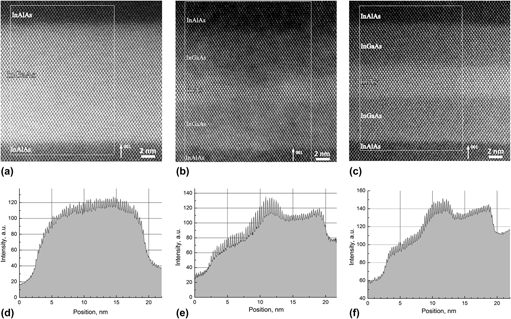Article contents
Electrophysical and structural properties of the composite quantum wells In0.52Al0.48As/InxGa1−xAs/In0.52Al0.48As with ultrathin InAs inserts
Published online by Cambridge University Press: 08 September 2015
Abstract

The electrophysical and structural properties of InAlAs/InGaAs/InAlAs quantum wells (QWs) with thin InAs inserts were investigated by means of Hall effect measurements and scanning transmission electron microscopy. The analyzed heterostructures are nearly the same ones using for high electron mobility transistors manufacturing except for heavily doped contact top layer. The increase of the electron mobility and concentration in the heterostructures with thin InAs layers in the center of the InGaAs QW as compared with the uniform QW was found and this effect strongly depended on the technological conditions during growth of the InAs inserts. The dependence of the InAs insert structural quality and heterointerface width on the As4 beam equivalent pressure PAs was revealed. The decreased PAs is required for obtaining uniform and smooth InAs inserts as opposed to higher PAs resulting in the interface spreading and lateral composition inhomogeneity of the InAs insert.
- Type
- Articles
- Information
- Copyright
- Copyright © Materials Research Society 2015
References
REFERENCES
- 5
- Cited by


